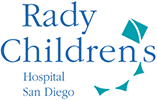Crib Safety
Your baby will spend a lot of time in the crib, napping during the day and sleeping at night. It's very important to make sure it's a safe environment. Always place your baby to sleep on their back to help prevent sudden infant death syndrome (SIDS).
Here are other important ways to make sure a crib is safe for your baby.
How Can I Make Sure a Crib Is Safe?
Check any crib for safety before placing your baby in it — whether it's a new crib or a hand-me-down that you use at home, or a crib your baby uses at daycare or at a relative's home.
Make sure that:
- The crib was made after 2011 to be sure it meets the most current safety requirements.
- The slats are no more than 2-3/8 inches (6 centimeters) apart and aren't cracked, loose, splintered, or missing.
- There are no decorative cutouts on the headboard or footboard in which the baby could become caught.
- There are no sharp or jagged edges.
- The sides do not drop.
- No screws are sticking out and all screws are accounted for.
- Tightly attached corner posts are no more than 1/16 inch (1.5 millimeters) high. This is so a child’s clothing can’t get stuck on the post.
Inside the crib, make sure that:
- The crib sheet snugly fits the mattress (never use an adult sheet).
- The mattress is flat and fits snugly against the sides of the crib and there aren't big gaps between the mattress and the crib.
- If your child can stand, the mattress is at its lowest position.
- The mattress is firm, not soft.
- Soft toys, comforters, blankets, and pillows (including infant positioners) are never kept in the crib.
- There are no bumpers in the crib.
- There are no mobiles or toys with strings or ribbons that your baby could reach.
- You remove any mobiles when your baby starts pushing up on the hands and knees, or by age 5 month (whichever comes first).
Also check that:
- There are no cords from drapes or window shades anywhere near the crib or within the baby's reach.
- The crib isn't subject to a safety recall (check the CPSC's website).
What Else Should I Know?
If you're expecting a baby or you already have a child, it's a good idea to learn cardiopulmonary resuscitation (CPR) and the Heimlich maneuver.

© 1995- The Nemours Foundation. KidsHealth® is a registered trademark of The Nemours Foundation. All rights reserved.
Images sourced by The Nemours Foundation and Getty Images.
